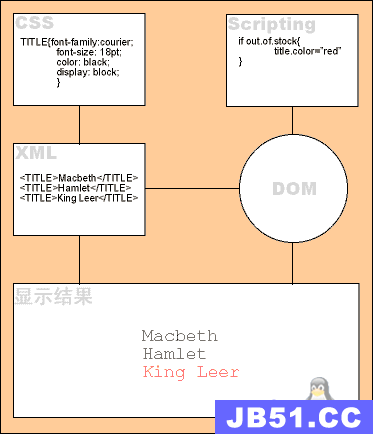Bean种类
1.普通bean:之前操作的都是普通bean。 ,spring直接创建A实例,并返回。
2.FactoryBean:是一个特殊的bean,具有工厂生成对象能力,只能生成特定的对象。
bean必须使用 FactoryBean接口,此接口提供方法 getObject() 用于获得特定bean。
先创建FB实例,使用调用getObject()方法,并返回方法的返回值
FB fb = new FB();
return fb.getObject();
BeanFactory 和 FactoryBean 对比?
BeanFactory:工厂,用于生成任意bean。
FactoryBean:特殊bean,用于生成另一个特定的bean。例如:ProxyFactoryBean ,此工厂bean用于生产代理。 获得代理对象实例。AOP使用
作用域
作用域:用于确定spring创建bean实例个数
取值:
singleton 单例,默认值。
prototype 多例,每执行一次getBean将获得一个实例。例如:struts整合spring,配置action多例。
配置信息:
<bean id="student" class="com.fly.Student" scope="prototype" ></bean>
生命周期:
初始化和销毁
1目标方法执行前后执行后,将进行初始化或销毁。
<bean id="" class="" init-method="初始化方法名称" destroy-method="销毁的方法名称">
弄个简单案例:
package com.fly.spring.cycle;
/** * 猪 * @author Administrator * */
public class Pig {
public void gongdi(){
System.out.println("猪在拱地");
}
public void init(){
System.out.println("********初始化*****888");
}
public void destory(){
System.out.println("********销毁*****888");
}
}
配置:
<?xml version="1.0" encoding="UTF-8"?>
<beans xmlns="http://www.springframework.org/schema/beans" xmlns:xsi="http://www.w3.org/2001/XMLSchema-instance" xsi:schemaLocation="http://www.springframework.org/schema/beans http://www.springframework.org/schema/beans/spring-beans.xsd">
<bean id="pig" class="com.fly.spring.cycle.Pig" init-method="init" destroy-method="destory"></bean>
</beans>
测试:
package com.fly.spring.cycle;
import org.junit.Test;
import org.springframework.context.support.ClassPathXmlApplicationContext;
/** * 测试生命周期 * @author Administrator */
public class TestCycle {
@Test
public void demo(){
String xmlPath = "com/fly/spring/cycle/applicationContext.xml";
ClassPathXmlApplicationContext context = new ClassPathXmlApplicationContext(xmlPath);
Pig bean = (Pig) context.getBean("pig");
bean.gongdi();
//要求:1.容器必须close,销毁方法执行; 2.必须是单例的
// applicationContext.getClass().getMethod("close").invoke(applicationContext);
// * 此方法接口中没有定义,实现类提供
context.close();
}
}
结果:
********初始化*****888
猪在拱地
三月 01,2017 3:16:17 下午 org.springframework.context.support.AbstractApplicationContext doClose
信息: Closing org.springframework.context.support.ClassPathXmlApplicationContext@123a439b: startup date [Wed Mar 01 15:16:17 CST 2017]; root of context hierarchy
三月 01,2017 3:16:17 下午 org.springframework.beans.factory.support.DefaultSingletonBeanRegistry destroySingletons
信息: Destroying singletons in org.springframework.beans.factory.support.DefaultListableBeanFactory@6d00a15d: defining beans [pig]; root of factory hierarchy
********销毁*****888
BeanPostProcessor 后处理Bean 这个要重点掌握
spring 提供一种机制,只要实现此接口BeanPostProcessor,并将实现类提供给spring容器,spring容器将自动执行,在初始化方法前执行before(),在初始化方法后执行after() 。 配置
Factory hook(勾子) that allows for custom modification of new bean instances,e.g. checking for marker interfaces or wrapping them with proxies
spring提供工厂勾子,用于修改实例对象,可以生成代理对象,是AOP底层
模拟
A a =new A();
a = B.before(a) –> 将a的实例对象传递给后处理bean,可以生成代理对象并返回。
a.init();
a = B.after(a);
a.addUser(); //生成代理对象,目的在目标方法前后执行(例如:开启事务、提交事务)
a.destroy();
看文字很枯燥,我们还是距离来证明吧。
package com.fly.spring.cycle;
/** * 猪 * @author Administrator * */
public class Pig {
public void gongdi(){
System.out.println("猪在拱地");
}
public void init(){
System.out.println("********初始化*****888");
}
public void destory(){
System.out.println("********销毁*****888");
}
}
实现的类:
package com.fly.spring.cycle;
import java.lang.reflect.InvocationHandler;
import java.lang.reflect.Method;
import java.lang.reflect.Proxy;
import org.springframework.beans.BeansException;
import org.springframework.beans.factory.config.BeanPostProcessor;
public class TestBeanPostProcessor implements BeanPostProcessor {
/** * 在初始化之后执行的方法 */
@Override
public Object postProcessAfterInitialization(Object bean,String beanName)
throws BeansException {
System.out.println("后方法 : " + beanName);
// bean 目标对象
// 生成 jdk 代理
return Proxy.newProxyInstance(
TestBeanPostProcessor.class.getClassLoader(),bean.getClass().getInterfaces(),new InvocationHandler(){
@Override
public Object invoke(Object proxy,Method method,Object[] args) throws Throwable {
System.out.println("------开启事务");
//执行目标方法
Object obj = method.invoke(bean,args);
System.out.println("------提交事务");
return obj;
}});
}
/** * 在初始化之前执行的方法 */
@Override
public Object postProcessBeforeInitialization(Object bean,String beanName)
throws BeansException {
System.out.println("前方法 : " + beanName);
return bean;
}
}
测试:
package com.fly.spring.cycle;
import java.lang.reflect.InvocationTargetException;
import org.junit.Test;
import org.springframework.context.support.ClassPathXmlApplicationContext;
/** * 测试生命周期 * @author Administrator */
public class TestCycle {
@Test
public void demo(){
String xmlPath = "com/fly/spring/cycle/applicationContext.xml";
ClassPathXmlApplicationContext context = new ClassPathXmlApplicationContext(xmlPath);
Pig bean = (Pig) context.getBean("pig");
bean.gongdi();
//要求:1.容器必须close,销毁方法执行; 2.必须是单例的
// try {
// context.getClass().getMethod("close").invoke(context);
// } catch (IllegalAccessException e) {
// e.printStackTrace();
// } catch (IllegalArgumentException e) {
// e.printStackTrace();
// } catch (InvocationTargetException e) {
// e.printStackTrace();
// } catch (NoSuchMethodException e) {
// e.printStackTrace();
// } catch (SecurityException e) {
// e.printStackTrace();
// }
// * 此方法接口中没有定义,实现类提供
context.close();
}
}
配置文件:
<?xml version="1.0" encoding="UTF-8"?>
<beans xmlns="http://www.springframework.org/schema/beans" xmlns:xsi="http://www.w3.org/2001/XMLSchema-instance" xsi:schemaLocation="http://www.springframework.org/schema/beans http://www.springframework.org/schema/beans/spring-beans.xsd">
<bean id="pig" class="com.fly.spring.cycle.Pig" init-method="init" destroy-method="destory"></bean>
<!-- 将后处理的实现类注册给spring -->
<bean class="com.fly.spring.cycle.TestBeanPostProcessor"></bean>
</beans>
问题1:后处理bean作用某一个目标类,还是所有目标类?
答案:所有
问题2:如何只作用一个?
答案:通过“参数2”beanName进行控制
属性依赖注入
1.依赖注入方式:手动装配 和 自动装配。
2.手动装配:一般进行配置信息都采用手动
基于xml装配:构造方法、setter方法
基于注解装配:
3.自动装配:struts和spring 整合可以自动装配
byType:按类型装配
byName:按名称装配
constructor构造装配,
auto: 不确定装配。
构造方法注入:
public class Person{
private Integer uid;
private String username;
private Integer age;
public Person(Integer uid,String username) {
super();
this.uid = uid;
this.username = username;
}
public Person(String username,Integer age) {
super();
this.username = username;
this.age = age;
}
spring配置
<!-- 构造方法注入
* <constructor-arg> 用于配置构造方法一个参数argument
name :参数的名称
value:设置普通数据
ref:引用数据,一般是另一个bean id值
index :参数的索引号,从0开始 。如果只有索引,匹配到了多个构造方法时,默认使用第一个。
type :确定参数类型
例如:使用名称name
<constructor-arg name="username" value="jack"></constructor-arg>
<constructor-arg name="age" value="18"></constructor-arg>
例如2:【类型type 和 索引 index】
<constructor-arg index="0" type="java.lang.String" value="1"></constructor-arg>
<constructor-arg index="1" type="java.lang.Integer" value="2"></constructor-arg>
-->
<bean id="userId" class="com.fly.User" >
<constructor-arg index="0" type="java.lang.String" value="1"></constructor-arg>
<constructor-arg index="1" type="java.lang.Integer" value="2"></constructor-arg>
</bean>
setter方法
<!-- setter方法注入
* 普通数据
<property name="" value="值">
等效
<property name="">
<value>值
* 引用数据
<property name="" ref="另一个bean">
等效
<property name="">
<ref bean="另一个bean"/>
-->
<bean id="personId" class="com.itheima.f_xml.b_setter.Person">
<property name="pname" value="阳志"></property>
<property name="age">
<value>1234</value>
</property>
<property name="homeAddr" ref="homeAddrId"></property>
<property name="companyAddr">
<ref bean="companyAddrId"/>
</property>
</bean>
<bean id="homeAddrId" class="com.itheima.f_xml.b_setter.Address">
<property name="addr" value="海口"></property>
<property name="tel" value="911"></property>
</bean>
<bean id="companyAddrId" class="com.itheima.f_xml.b_setter.Address">
<property name="addr" value="深圳"></property>
<property name="tel" value="120"></property>
</bean>
集合注入
<!-- 集合的注入都是给<property>添加子标签 数组:<array> List:<list> Set:<set> Map:<map> ,map存放k/v 键值对,使用<entry>描述 Properties:<props> <prop key=""></prop> 【】 普通数据:<value> 引用数据:<ref> -->
<bean id="collDataId" class="com.itheima.f_xml.e_coll.CollData" >
<property name="arrayData">
<array>
<value>DS</value>
<value>DZD</value>
<value>露西</value>
<value>莉莉</value>
</array>
</property>
<property name="listData">
<list>
<value>黑泽明</value>
<value>宫崎骏</value>
<value>小野丽莎</value>
<value>苍井空</value>
</list>
</property>
<property name="setData">
<set>
<value>深圳</value>
<value>广州</value>
<value>东莞</value>
</set>
</property>
<property name="mapData">
<map>
<entry key="jack" value="茜茜公主"></entry>
<entry>
<key><value>rose</value></key>
<value>白雪公主</value>
</entry>
</map>
</property>
<property name="propsData">
<props>
<prop key="高富帅">嫐</prop>
<prop key="白富美">嬲</prop>
<prop key="男屌丝">挊</prop>
</props>
</property>
</bean>

